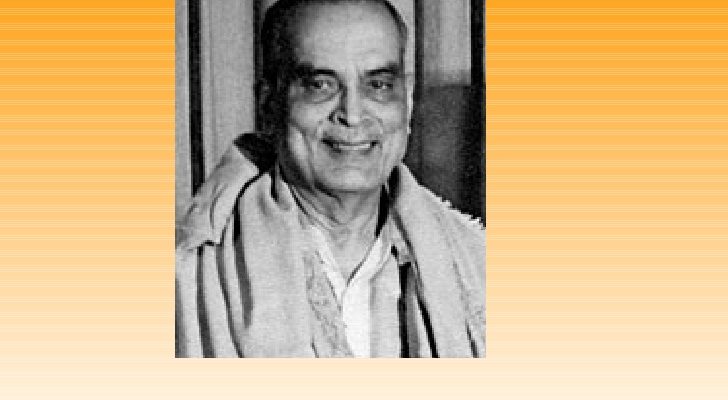Dr. B.C. Roy was the one to establish the Indian Medical Association in 1928 and even the Medical Council of India.Doctor’s Day is celebrated in the US and other western countries on March 30 the day when Dr. Crawford W. Long first used ether anesthesia in surgery.
Dr. B.C. Roy was one of the foremost national leaders of the 20th century. A legendary physician, distinguished political leader, philanthropist, educationist and social worker, he was one of the longest serving Chief Ministers and is rightly hailed as the Maker of Modern West Bengal.
Dr. B.C. Roy was the one to establish the Indian Medical Association in 1928 and even the Medical Council of India. He also played a crucial role in establishing the Indian Institute of Mental Health, the Infectious Disease Hospital and even Kolkata’s first-ever postgraduate medical college.
He was Mahatma Gandhi’s close friend and doctor. Though he wanted to continue his profession, when his flame was proposed to be the second Chief Minister of West Bengal, it was on Gandhi’s advice that he took up the post.
The nation honored Dr. Roy with the Bharat Ratna on February 4, 1961. On July 1, 1962, after treating his morning patients and discharging affairs of the State, he took a copy of the “Brahmo Geet” and sang a piece from it. 11 hours later Dr. Roy died.
The B.C. Roy National Award was instituted in 1976 for work in the area of medicine, politics, science, philosophy; literature and arts. The Dr. B.C. Roy Memorial Library and Reading Room for Children in the Children’s Book Trust, New Delhi, was opened in 1967.
The first Doctor’s Day was celebrated in 1991.National Doctor’s Day is commonly celebrated ‘” in healthcare organizations as a day to recognize the contributions of doctors to individual lives and communities. These events are typically organized by staff at a healthcare organization.
Doctor’s Day is celebrated in the US and other western countries on March 30 the day when Dr. Crawford W. Long first used ether anesthesia in surgery.
B. C. Roy was born on July 1, 1882, in Patna, Bihar. His father Prakash Chandra was an Excise Inspector. Bidhan’s mother died when he was 14.
B. C. Roy left for Calcutta in June 1901. While at medical school Bidhan came upon an inscription which read, “Whatever thy hands findeth to do, do it with thy might.” Bidhan was deeply impressed by these words and they became a source of inspiration for him throughout his life.
Bidhan’s term in medical school was fraught with hardships. His father retired as a Deputy Collector after the first year and could no longer send Bidhan any money. Bidhan fended for himself by getting a scholarship and living frugally, saving on books by borrowing notes and relying on books in the library.
Immediately after graduation, B.C. Roy joined the Provincial Health Service. He was prepared to prescribe medicine to patients and even serve as a nurse when necessary. In his free time he practiced privately, charging a nominal fee of Rs. 2 only.
Within two years and three months, Bidhan completed his M.R.C.P. and F.R.C.S. and returned home from England in 1911. On his return he taught at the Calcutta Medical College, then the Campbell Medical School and finally at the Carmrchael Medical College .
Dr. Roy believed that swaraj would remain a dream unless the people were healthy and strong in mind and body. He made contributions to the organization of medical education. He established the Jadavpur T.B. Hospital, Chittaranjan Seva Sadan, R.G. Kar Medical College, Kamala Nehru Hospital, Victoria Institution, and Chittaranjan Cancer Hospital. The Ctuttaranjan Seva Sadan for women and children was opened in 1926. He opened a center for training women in nursing and; social work.
Dr. Roy was serving as the Vice-Chancellor of the University of Calcutta. He acquired air-raid shelters for schools and college students to have their classes in, and provided relief for students, teachers and employees alike. In recognition for his efforts, the Doctorate of Science was conferred upon him in 1944.
At his Convocation Address on December 15, 1956 at the University of Lucknow, Dr. Roy said, “My young friends, you are soldiers in the battle of freedom-freedom from want, fear, ignorance, frustration and helplessness. By a dint of hard work for tile country, rendered in a spirit of selfless service, may you march ahead with hope and courage …. “
During the Dandi March in 1931, many members of the Calcutta Corporation were imprisoned. Congress requested Dr. Roy to remain out of prison and discharge the duties of the Corporation. He served as the Alderman of the Corporation from 1930-31 and Mayor in 1933. Under him, the Corporation made leaps in the expansion of free education, free medical aid, (letter roads, improved lighting, and water supply. He was responsible for setting up a framework for dispensing grant-in-aid to hospitals and charitable dispensaries.
The Congress Party proposed Dr. Roy’s name for Chief Minister of Bengal. Dr. Roy wanted to devote himself to his profession. On Gandhiji’s advice, however, Dr. Roy accepted the position and took office on January 23, 1948. Bengal at the time had been torn by communal violence, shortage of food, unemployment and a large flow of refugees in the wake of the creation of East Pakistan.
Dr. Roy brought unity and discipline amongst the party ranks. He then systematically and calmly began to work on the immense task in front of him.




